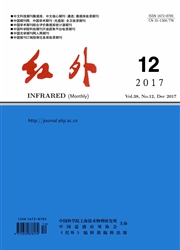

 中文摘要:
中文摘要:
本文采用混合密度泛函理论中的B3LYP方法,结合6-31G(df,p)基组,首次系统地分析了组氨酸的四种质子化结构在空气、四氯化碳、四氢呋喃和水中的几何结构和红外光谱。为进一步探索质子化状态、介质和脊骨对组氨酸红外特征光谱的影响,我们对不同情况下的计算结果进行了比较,同时与文献中4-甲基咪唑环在水中的实验结果进行对比分析。结果表明,N1C2键的键长和C2N3键的键长在N1H—His和N3H-His这两种结构优化后的结果刚好相反;介质的相对介电常数越大,计算得到的红外振动频率越低,而振动强度则越强;脊骨的存在,使得咪唑环上大多数分子键的振动频率向下偏移,上移情况多数出现在阴离子状态。该研究为深入理解组氨酸在光合反应中心的蛋白质环境中的作用与功自莹提供珲论参考依椐。
 英文摘要:
英文摘要:
The geometry and infrared spectra of four protonation forms of histidine in air, tetrachloromethane, THF and water are systematically analyzed by using the B3LYP method in hybrid density functional theory in combination with the 6-31G(df, p) basis. To further investigate the influences of protonation states, Amine and Carboxyl group on the infrared spectra of histidine, the calculated results in different cases are compared with each other and with the experimental result of 4-methylimidazole in water. The result shows that when the geometry of the N1C2 and C2N3 are optimized, their changes in bond length are completely opposite. The greater the dielectric constant of the media used, the lower the vibrational frequency is and hence the higher the vibrational intensity obtained is. Due to the presence of the Amine and Carboxyl group of histidine, the vibrational frequencies of most molecular bonds on the imidazole ring generally shift downward while the frequency up-shift is observed in the anionic state. The result is helpful to the further understanding of the functional and vibrational properties of histidine in the protein environment of photosynthetic reaction center.
 同期刊论文项目
同期刊论文项目
 同项目期刊论文
同项目期刊论文
 Calculated of Vibrational Spectral Properties of Four Protonation Forms of Histidine Using Density F
Calculated of Vibrational Spectral Properties of Four Protonation Forms of Histidine Using Density F 期刊信息
期刊信息
